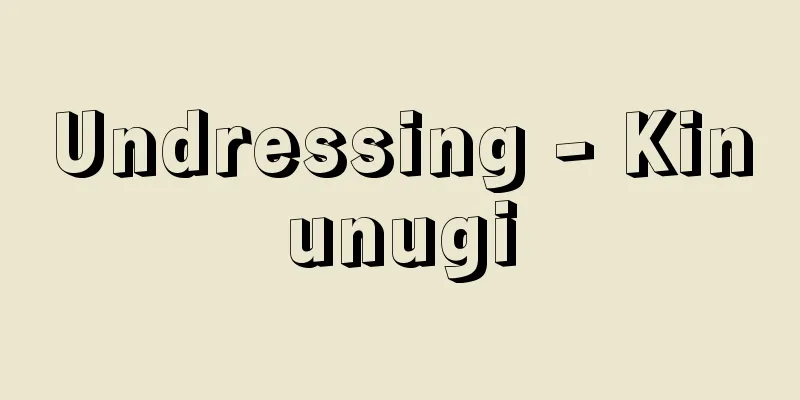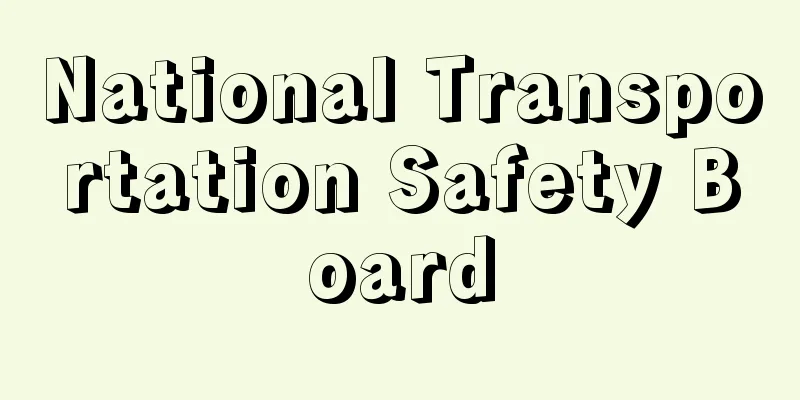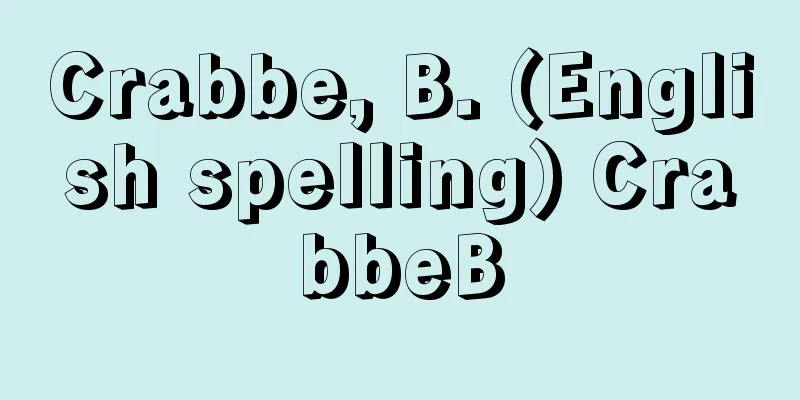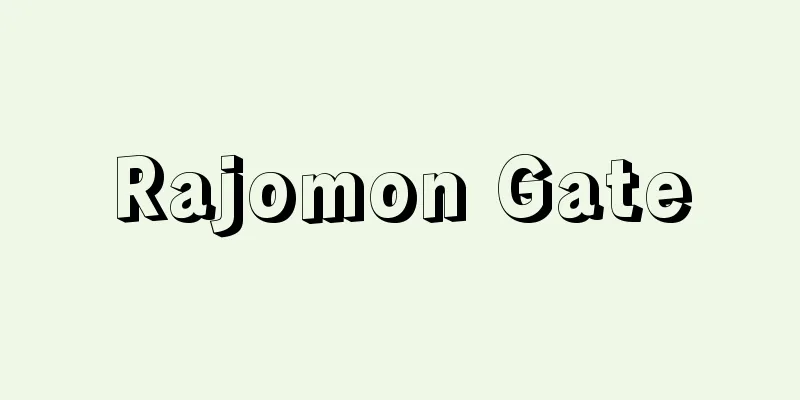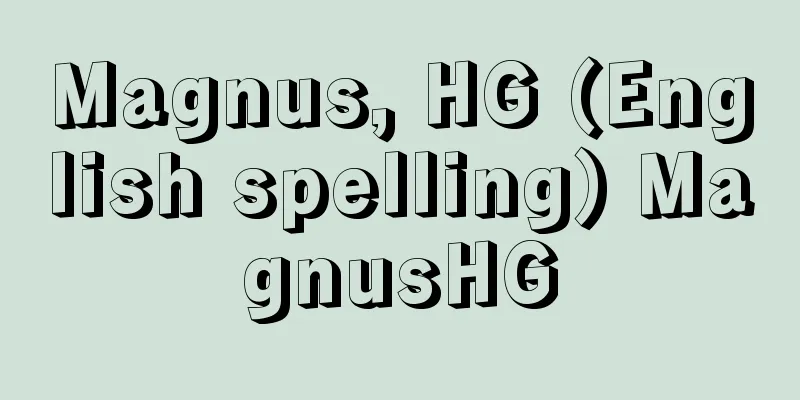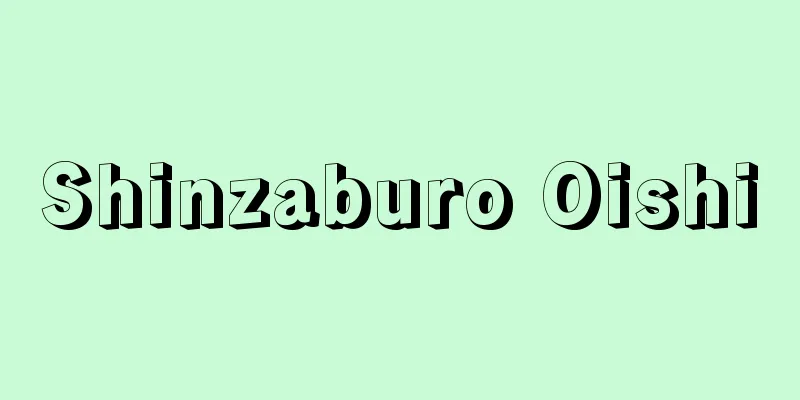Montenegro - Montenegro (English spelling)
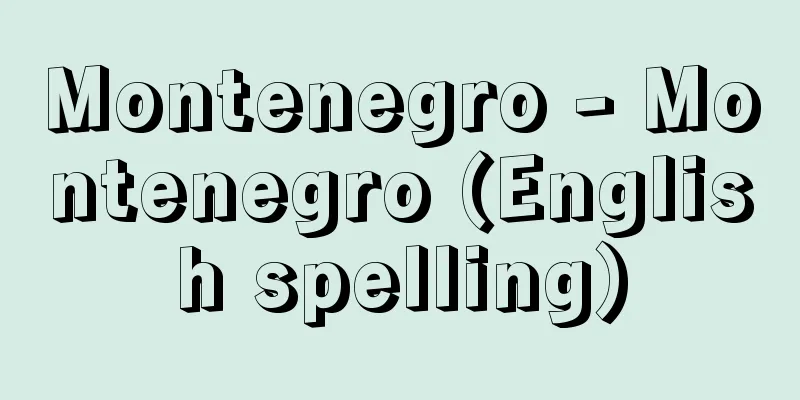
|
A republic located in the southeastern part of Europe, on the Balkan Peninsula. In Serbian, it is called Crna Gora (meaning Black Mountain). It is named after the fact that in the 15th century, when the Turks and Albanians invaded, the Serbian people barricaded themselves in a plateau called Crna Gora and fought back. "Montenegro" means "Black Mountain" in Italian, and is also called Montenegro in English, French, and German. The country faces the Adriatic Sea to the south, and borders Bosnia and Herzegovina to the northwest, Serbia to the northeast, Kosovo to the east, and Albania to the southeast. It has an area of 13,812 square kilometers, and a population of 617,740 (2003 census), approximately 624,000 (2006 estimate). The capital is Podgorica (formerly Titograd). It was originally one of the six republics that made up the Socialist Federal Republic of Yugoslavia (former Yugoslavia), and from 1992 it was part of the Federal Republic of Yugoslavia (New Yugoslavia) together with Serbia. Based on the new constitution (constitutional charter) promulgated in February 2003, the two republics were given significantly more executive power, and the country transitioned to a looser federation. The country's name was changed to Serbia and Montenegro. After that, it became a constituent republic of Serbia and Montenegro, but it had long had a strong desire for independence, and on May 21, 2006, a referendum was held to ask whether it should become independent. As a result, independence was decided by a majority vote, and on June 3 of the same year, Montenegro declared independence and became the independent state Republic of Montenegro (Republika Crne Gore). After that, in October 2007, a new constitution was enacted, and the official name of the country was changed from Republic of Montenegro to Montenegro. Following Montenegro's independence, Serbia became the independent Republic of Serbia, the successor state to Serbia and Montenegro. The majority of the population is Montenegrin (43%), but there are also many other ethnicities, including Serbs (about 32%), Muslims, Albanians, and Roma. The first official language is Serbian, but many other languages are spoken, including Montenegrin, Bosnian, Albanian, Hungarian, and Roma. There is also a diverse religious presence, with Serbian Orthodox, Catholic, Muslim, Protestant, and others. The southwestern part corresponds to the southern end of the Dinaric Alps and is a limestone plateau that is almost uncultivable except in the Morača River basin. The eastern part has a continental climate and consists of grasslands. The Adriatic coast has a Mediterranean climate and is extremely hot in summer. In addition to livestock farming and forestry, industrialization also progressed after World War II. Hydroelectric power is produced, and an aluminum complex was built in Podgorica to utilize the abundant bauxite. In 1976, a 480-kilometer railway line was opened between Belgrade and the port city of Bar on the Adriatic coast, improving transportation conditions. [Kazuko Urushibara] historyThe history of Montenegro is part of the history of the Middle Ages in Serbia. After the death of the Serbian king Dušan in 1355, the Montenegrin region north of Lake Shkoder (Lake Skadar, Albanian name: Lake Shkodra) escaped from Serbian rule as the Principality of Zeta. Although it succumbed to the rule of the Ottoman Empire (Turkey) in the second half of the 15th century, Ivan Crnojević (reigned 1465-1490) of the Crnojević dynasty, founded in 1422, moved the capital to Cetinje in the mountains and maintained its independence. A monastery was built in Cetinje, and publishing activities also progressed with the import of printing presses from Venice. When the Crnojević dynasty came to an end in 1516, the Eastern Orthodox bishop Vladica, whose power had been gradually increasing, took control and formed a theocracy. Danilo Petrović (1697-1735), who was elected Vladica in 1699, established the hereditary system, and the Petrović family continued to rule until World War I. Relations with Russia were strengthened, and the country withstood attacks from the Ottoman Empire. Peter I Petrović Njegoš (1784-1830) and the poet Peter II Petrović Njegoš (1830-1851) are well known. In 1878, together with Serbia, independence was officially recognized. King Nikola Petrović (1860-1918) was called the "Father-in-law of Europe" because he married his daughters into European royal families, including those of Italy, Russia, Germany, and Serbia. After World War I, the South Slavic peoples were united into a unified state called the Kingdom of Serbs, Croats and Slovenes (after 1929, renamed the Kingdom of Yugoslavia). [Yoshihiro Shiba] From Yugoslavia to Serbia and Montenegro, and the path to independenceWhen the country was to be united into the Kingdom of Serbs, Croats and Slovenes, the Montenegrin parliament was divided between unification with the Kingdom of Serbia and preserving the Montenegrin dynasty. In the end, the parliament voted for unification with Serbia, given the objective circumstances at the time. In the new state, Montenegro, which had abolished its own dynasty, was increasingly seen as being the same as Serbia, and groups that opposed this and sought autonomy for Montenegro temporarily became powerful. During World War II, the mountainous region of Montenegro became a major stage for the partisan war against the Axis forces, including Germany. The partisans won, and in November 1945, the Federal Republic of Yugoslavia (former Yugoslavia) was established with Tito as its leader. Montenegrins were recognized as an ethnic group, and Montenegro became the smallest of the six constituent republics. Under the self-managed socialist system after the Second World War, decentralization was promoted, but Montenegro, with a population of about 600,000, was an economically backward republic and always cooperated with Serbia, which was culturally homogeneous with it. The "Constitution of '74" (the Yugoslav Constitution amended in 1974) subsequently recognized the "economic sovereignty" of six republics and two autonomous regions, and introduced a loose federal system. After Tito's death in 1980, amid the prolonged "economic crisis" of the 1980s and the problem of Kosovo Albanian separatism, which sought republic status, the movement for strengthening the federal system became prominent in Serbia, and Milošević emerged as a leader against the backdrop of rising nationalism. At the end of the 1980s, Serbia and Slovenia came into conflict over whether to strengthen the federal system or move to a loose confederation of states, and the former Yugoslavia moved toward dissolution. In the free elections held in each republic in 1990, the Communist League, which changed its name to the Socialist Party, won. Even as the former Yugoslavia was disintegrating, Montenegro, together with Serbia, maintained its position of maintaining the federation. In June 1991, Slovenia and Croatia declared independence, beginning the Yugoslav Civil War. In January 1992, the Socialist Federal Republic of Yugoslavia was essentially dissolved as both countries received recognition from the European Community (EC) countries, and Slovenia, Croatia, Macedonia (now the Republic of North Macedonia), and Bosnia and Herzegovina also declared independence. In April of the same year, Montenegro and Serbia founded the Federal Republic of Yugoslavia (New Yugoslavia), which succeeded the former Yugoslavia. The Bosnian Civil War ended in 1995, but Milošević continued to hold real power in the new Yugoslavia. As the new Yugoslavia failed to return to the international community and continued to suffer from economic stagnation, Montenegro strengthened its tendency to become independent. Furthermore, the Milosevic regime was at odds with the international community over the Kosovo conflict (1998-1999), and the new Yugoslavia was bombed by NATO (North Atlantic Treaty Organization) forces in March 1999. As a result, Montenegro's tendency towards independence strengthened. In September 2000, Milošević lost the presidential election held under the worst economic conditions due to the continued economic sanctions, and in October the "People's Revolution" collapsed the Milošević regime that had been in power for 13 years, and Koštunica of the Union of Serbian Opposition Parties (DOS) became the new president. In response to Montenegro's demand for independence, the Federal Assembly adopted a constitutional charter in February 2003 to reorganize the new Yugoslavia as a federal state. As a result, the country's name was changed from the "Federal Republic of Yugoslavia" to "Serbia and Montenegro." The name "Yugoslavia" disappeared completely. Even after that, the tendency towards independence strengthened in the Republic of Montenegro, which uses the euro as its currency and has a different economic, legal and other systems from the Republic of Serbia. In a national referendum on independence held on May 21, 2006, over 55% of votes were in favor of independence. In response to this result, a motion in favor of independence was passed by parliament, and on June 3 of the same year, Montenegro, with a population of 650,000, declared independence. It quickly received international recognition, and joined the United Nations on June 28 of the same year. In October 2007, a new constitution was enacted, and the country's official name was changed from the Republic of Montenegro to Montenegro. The political system is a republic. The head of state is the president, whose term of office is five years. As of 2011, the president is Filip Vujanović (1954-, term 2003-). The parliament is unicameral with 81 seats and a four-year term. Political parties include the Socialist Democratic Party, the Social Democratic Party, the Social People's Party, the People's Party, and the new party "Movement for Change". Since 1991, the powerful figure at the center of the government has been Milo Djukanović (1962-), leader of the Socialist Democratic Party, who has served as prime minister and president. In the March 2009 parliamentary election (81 seats), the ruling coalition centered on the Socialist Democratic Party won, and Djukanović's administration continued, but in December 2010, Djukanović resigned as prime minister, saying that he had succeeded in opening the way to the EU and NATO membership, which was his biggest political issue. He was succeeded as Prime Minister by Finance Minister Igor Lukšić (1976-). Montenegro applied for NATO membership in December 2009, and became a candidate for EU membership in December 2010. [Yoshihiro Shiba] Economy and IndustryThe main industries are tourism, agriculture, and manufacturing. Tourism in particular is growing, but infrastructure development and service improvement are issues. GDP (gross domestic product) is approximately $3.1 billion, and GDP per capita is $5,214 (2007). Trade volume is exports of $860 million and imports of $2.95 billion (2007). Major export items are aluminum, steel, and wood products, while major import items are automobiles, machinery, and food. Major trading partners include Serbia, Italy, Croatia, and Greece. [Yoshihiro Shiba] cultureThe area is mostly made up of limestone mountains made up of the Dinaric Alps, and because it is a natural "fortress" that is difficult to approach from the outside, it escaped direct rule by the Ottoman Empire. It has a history as a region where Western Catholic culture and Eastern Byzantine culture intersected, and the influence of this remains strong in its cultural heritage. UNESCO (United Nations Educational, Scientific and Cultural Organization) World Heritage Sites include the cultural heritage "Nature and Culture of Kotor: Historic Region", "Medieval Tombstone Necropolis of Steči" (registered in four countries: Montenegro, Serbia, Croatia, and Bosnia-Herzegovina), "16th-17th Century Venetian Military Defences: Start da Terra and Start da Mare in the West" (registered in three countries: Montenegro, Italy, and Croatia), and the natural heritage "Durmitor National Park". [Yoshihiro Shiba] Relations with JapanIt has been a pro-Japanese country since the days of the former Yugoslav Federation, and in 2004 a Japanese language course was opened at the Faculty of Economics of the University of Montenegro. Japan recognized Montenegro's independence on June 16, 2006, and established diplomatic relations in July of the same year, but no diplomatic mission has been established there. In June 2007, Djukanovic visited Japan. Exports to Japan were 170 million yen, and imports from Japan were 2.48 billion yen (2015 trade statistics). [Yoshihiro Shiba] "More About Yugoslavia, edited by Shiba Yoshihiro (1991, Kobundo)" ▽ "What's Happening in Yugoslavia, written by Shiba Yoshihiro (1993, Iwanami Booklet)" ▽ "History of Yugoslavia, edited by Clissold and translated by Tanaka Issei, Shiba Yoshihiro, and Takada Toshiaki (1995, Kobunsha)" ▽ "Encyclopedia of Eastern Europe (revised and expanded)" edited by Ito Takayuki, Naono Atsushi, Hagiwara Nao, Minamizuka Shingo, and Shiba Yoshihiro (2005, Heibonsha)" ▽ "Illustrated History of the Balkans, written by Shiba Yoshihiro (2006, Kawade Shobo Shinsha)" ▽ "Modern History of Yugoslavia, written by Shiba Yoshihiro (Iwanami Shinsho)" ▽ "The Unending 'Ethnic Cleansing' of Serbia and Montenegro, written by Kimura Motohiko (Shueisha Shinsho)" ▽ "The Yugoslav Conflict: The Tragedy of a Multi-Ethnic, Mosaic Nation" by Yoshitaka Senda (Kodansha Gendai Shinsho) [References] | | | NATO| | | | | | | | | | | | | | | | | | | | | | | [Supplementary material] |"> Montenegro flag ©Shogakukan Illustration/Shogakukan Creative "> Montenegro location map Source: Shogakukan Encyclopedia Nipponica About Encyclopedia Nipponica Information | Legend |
|
ヨーロッパ南東部、バルカン半島に位置する共和国。セルビア語ではツルナ・ゴーラCrna Gora(黒い山の意)という。15世紀にトルコ人とアルバニア人の侵略を受けた際にツルナ・ゴーラとよばれる高原地帯に立てこもって抗戦したことにちなむ。「モンテネグロ」はイタリア語で「黒い山」を意味し、英語、フランス語、ドイツ語でもモンテネグロとよばれる。国土の南はアドリア海に臨み、北西をボスニア・ヘルツェゴビナ、北東をセルビア、東をコソボ、南東をアルバニアと接する。面積1万3812平方キロメートル、人口61万7740(2003年センサス)、約62万4000(2006年推計)。首都はポドゴリツァ(旧名、チトーグラード)。 もともとはユーゴスラビア社会主義連邦共和国(旧ユーゴスラビア)を構成していた6共和国の一つで、1992年からはセルビアとともにユーゴスラビア連邦共和国(新ユーゴスラビア)を構成していた。2003年2月公布の新憲法(憲法的憲章)に基づき、両共和国の行政権を大幅に拡大した、より緩やかな連合国家へ移行。国名をセルビア・モンテネグロと改称した。その後はセルビア・モンテネグロの構成共和国となっていたが、かねてより分離独立志向が強く、2006年5月21日に独立の是非を問う住民投票を実施。その結果、賛成多数により独立を決定、同年6月3日モンテネグロは独立を宣言し、独立国家モンテネグロ共和国Republic of Montenegro(Republika Crne Gore)となった。その後、2007年10月新憲法を制定、正式な国名をモンテネグロ共和国からモンテネグロに変更した。なお、モンテネグロの独立を受け、セルビアは、セルビア・モンテネグロの承継国として独立国家セルビア共和国となった。 住民は、モンテネグロ人(43%)が多いが、ほかにセルビア人(約32%)、ムスリム(イスラム教徒)、アルバニア人、ロマなど多くの民族からなる。第一の公用語はセルビア語であるが、モンテネグロ語、ボスニア語、アルバニア語、ハンガリー語、ロマ語など多くの言語が用いられている。宗教も多様で、セルビア正教徒、カトリック、イスラム教徒、プロテスタント、その他などとなっている。 南西部はディナル・アルプス南端に相当し、石灰岩の高原地帯で、モラチャ川流域以外はほとんど耕作不能である。東部は大陸性気候で草原をなす。アドリア海岸は地中海性気候で、夏きわめて高温になる。牧畜、林業のほか、第二次世界大戦後は工業化も進んだ。水力発電が行われ、豊富なボーキサイトを利用してポドゴリツァにアルミニウム・コンビナートが建設された。1976年には、ベオグラードとアドリア海岸の港湾都市バールとの間に480キロメートルの鉄道が開通し、輸送事情が改善された。 [漆原和子] 歴史モンテネグロの歴史はセルビア中世史の一部を形成している。1355年にセルビア王ドゥシャンが死んだ後、シュコーデル湖(スカダル湖。アルバニア語名、シュコドラ湖)北部のモンテネグロ地方がゼータ侯国としてセルビアの統治から脱した。15世紀後半にオスマン帝国(トルコ)の支配に屈したものの、1422年に創設されたツルノエビッチ王朝のイバンIvan Crnojević(在位1465~1490)は、山岳地のツェティニェに首都を移し、その独自性を保持した。ツェティニェには修道院がつくられ、またベネチアから印刷機が輸入されて出版活動も進んだ。1516年ツルノエビッチ王朝が終息すると、しだいに力を増していた東方正教会主教「ブラディカ」が支配権を手中にして、神政国家を形成した。1699年にブラディカに選出されたダニロ・ペトロビッチDanilo Petrović(在位1697~1735)は世襲制を確立し、以後第一次世界大戦まで、ペトロビッチ家の統治が続いた。ロシアとの関係が強化され、オスマン帝国の攻撃に耐えた。ペータル1世Petar Ⅰ Petrović Njegoš(在位1784~1830)や詩人でもあるペータル2世Petar Ⅱ Petrović Njegoš(在位1830~1851)はよく知られている。1878年のベルリン条約でセルビアとともに正式に独立を承認された。ニコラ国王Nikola Petrović(在位1860~1918)は娘たちをイタリア、ロシア、ドイツ、セルビアなどヨーロッパの王家に嫁がせたため、「ヨーロッパの義父」とよばれた。第一次世界大戦後、南スラブ人の統一国家である「セルビア人・クロアチア人・スロベニア人王国」(1929年以後、ユーゴスラビア王国と改称)に統一された。 [柴 宜弘] ユーゴスラビアからセルビア・モンテネグロ、そして独立への道のり「セルビア人・クロアチア人・スロベニア人王国」への統合に際して、セルビア王国との統一か、モンテネグロ王朝の保持かで二分していたモンテネグロ議会は、最終的には当時の客観情勢からセルビアとの統一を採択した。新国家において、自らの王朝を廃したモンテネグロでは、セルビアと同一視される傾向が強まったため、これに反対してモンテネグロの自治を求めるグループが、一時大きな勢力となった。第二次世界大戦期、山岳地のモンテネグロは、ドイツをはじめとする枢軸軍に抵抗するパルチザン戦争の主要な舞台となった。パルチザンが勝利を収め、1945年11月には、チトーを首班とするユーゴスラビア連邦共和国(旧ユーゴスラビア)が成立。モンテネグロ人が民族として承認され、モンテネグロは構成6共和国のうち最小の共和国となった。 第二次世界大戦後の自主管理社会主義体制下では、分権化が進められたが、人口約60万のモンテネグロは経済的に後進の共和国であり、文化的に同質であるセルビアとつねに協調行動をとってきた。その後「74年憲法」(1974年に改正されたユーゴスラビア憲法)により、6共和国と2自治州の「経済主権」が認められ、緩い連邦制が導入された。1980年のチトーの死去後、1980年代の「経済危機」と共和国への昇格を求めるコソボのアルバニア人分離独立問題が長期化するなか、セルビアでは連邦制の強化を求める動きが顕著になり、民族主義の高まりを背景にして、ミロシェビッチが指導者として登場した。1980年代末には、連邦制の強化か、あるいは緩い国家連合への移行かをめぐり、セルビアとスロベニアが対立し、旧ユーゴは解体へと向かう。1990年に行われた共和国ごとに実施された自由選挙では、社会党と改称した共産主義者同盟が勝利を収めた。旧ユーゴが解体していく過程においても、モンテネグロはセルビアとともに連邦維持の立場を貫いた。 1991年6月スロベニア、クロアチアが独立を宣言し、ユーゴ紛争(ユーゴスラビア内戦)が始まった。1992年1月には、両国がEC(ヨーロッパ共同体)諸国の承認を受けたことから、ユーゴスラビア社会主義連邦共和国が実質的に解体し、スロベニア、クロアチア、そしてマケドニア(現、北マケドニア共和国)、ボスニア・ヘルツェゴビナも独立を宣言した。同1992年4月、モンテネグロはセルビアとともに、旧ユーゴを継承するユーゴスラビア連邦共和国(新ユーゴスラビア)を建国した。1995年にボスニア内戦が終息したが、新ユーゴでは、ミロシェビッチが実権を握り続けた。新ユーゴは国際復帰を果たせず、経済不振が継続したため、モンテネグロは自立傾向を強めた。また、ミロシェビッチ政権がコソボ紛争(1998~1999年)をめぐり、国際社会と対立し、1999年3月に新ユーゴはNATO(ナトー)(北大西洋条約機構)軍の空爆を受けた。この結果、モンテネグロの自立化傾向は強まった。 2000年9月、経済制裁が続く最悪の経済状態のもとで行われた大統領選でミロシェビッチは敗北、10月の「民衆革命」により、13年に及ぶミロシェビッチ政権は崩壊し、セルビア野党連合(DOS)のコシュトゥニツァが新大統領となった。モンテネグロの自立化要求を受けて、2003年2月、連邦議会において新ユーゴを連合国家として再編するための憲法的憲章が採択された。これに伴い、国名がそれまでの「ユーゴスラビア連邦共和国」から「セルビア・モンテネグロ」に変更された。ユーゴスラビアという名称は完全に消滅した。 その後も、ユーロを通貨とし、経済・法律などの体制もセルビア共和国と異なるモンテネグロ共和国では、独立傾向が強まった。2006年5月21日に行われた独立の是非を問う国民投票で、独立賛成票が55%を超えた。この結果を受けて、独立賛成案が議会で可決され、同年6月3日、人口65万人のモンテネグロは独立を宣言した。すぐに国際的承認を受けることができ、同年6月28日に国連に加盟。2007年10月に新憲法を制定し、正式な国名をモンテネグロ共和国からモンテネグロに変更した。 政体は共和制。元首は大統領で任期は5年。2011年時点で大統領はフィリップ・ブヤノビッチFilip Vujanović(1954― 、任期2003~ )。議会は一院制で81議席、任期は4年。政党は社会主義民主党、社会民主党、社会人民党、人民党、新党「変革のための運動」などがある。1991年以来、政権の中枢にいた実力者は社会主義民主党党首ミロ・ジュカノビッチMilo Djukanović(1962― )で、首相と大統領を歴任。2009年3月の議会選挙(定数81)でも社会主義民主党中心の与党連合が勝利し、ジュカノビッチ政権が継続したが、2010年12月、ジュカノビッチは最大の政治課題であるEUとNATO加盟の端緒を開くことができたとして、首相を辞任した。後任の首相には財務相ルクシッチIgor Lukšić(1976― )が就任した。モンテネグロは、2009年12月にNATO加盟申請をしており、2010年12月にはEU加盟候補国になった。 [柴 宜弘] 経済・産業主要産業は、観光業、農業、製造業。とくに観光業は成長しつつあるが、インフラの整備とサービス向上が課題といえる。GDP(国内総生産)は約31億ドル、1人当りGDPは5214ドル(2007)。貿易額は輸出8.6億ドル、輸入29.5億ドル(2007)、主要輸出品目はアルミニウム、鉄鋼、木工品など、主要輸入品目は自動車、機械、食料品など、主要貿易相手国はセルビア、イタリア、クロアチア、ギリシアなど。 [柴 宜弘] 文化ディナル(ディナール)・アルプスがなす石灰岩の山岳地が大半を占め、外部から近づきがたい自然の「要塞」となっているため、オスマン帝国の直接統治を免れた。西欧カトリック文化と東方ビザンティン文化が交わる地域としての歴史をもち、文化遺産にもその影響が色濃く残る。ユネスコ(国連教育科学文化機関)の世界遺産の登録地としては、文化遺産の「コトルの自然と文化:歴史地域」、「中世墓碑ステチュツィの墓所群」(モンテネグロ、セルビア、クロアチア、ボスニア・ヘルツェゴビナの4か国で登録)、「16~17世紀ベネチア共和国の軍事防衛施設群:スタート・ダ・テッラと西部スタート・ダ・マーレ」(モンテネグロ、イタリア、クロアチアの3か国で登録)、自然遺産の「ドゥルミトル国立公園」がある。 [柴 宜弘] 日本との関係旧ユーゴスラビア連邦時代以来の親日国であり、2004年にはモンテネグロ大学経済学部にも日本語コースが開設された。日本は2006年6月16日にモンテネグロの独立を承認、同年7月に外交関係を開設したが、外交公館は設置されていない。2007年6月にはジュカノビッチが来日。日本への輸出は1.7億円、日本からの輸入は24.8億円(2015年貿易統計)。 [柴 宜弘] 『柴宜弘編『もっと知りたいユーゴスラヴィア』(1991・弘文堂)』▽『柴宜弘著『ユーゴスラヴィアで何が起きているか』(1993・岩波ブックレット)』▽『クリソルド編、田中一生・柴宜弘・高田敏明訳『ユーゴスラヴィア史』(1995・恒文社)』▽『伊東孝之、直野敦、萩原直、南塚信吾、柴宜弘監修『東欧を知る事典(新訂増補)』(2005・平凡社)』▽『柴宜弘著『図説バルカンの歴史』(2006・河出書房新社)』▽『柴宜弘著『ユーゴスラヴィア現代史』(岩波新書)』▽『木村元彦著『終わらぬ「民族浄化」セルビア・モンテネグロ』(集英社新書)』▽『千田善著『ユーゴ紛争――多民族・モザイク国家の悲劇』(講談社現代新書)』 [参照項目] | | | | | | | | | | | | | | | | | | | | | | | | | | | [補完資料] |"> モンテネグロの国旗 ©Shogakukan 作図/小学館クリエイティブ"> モンテネグロ位置図 出典 小学館 日本大百科全書(ニッポニカ)日本大百科全書(ニッポニカ)について 情報 | 凡例 |
<<: Montevideo (English spelling)
>>: Montaigne - Michel Eyquem de Montaigne
Recommend
Life type
A classification of the life style of an organism....
Waagenophyllum
…In Japan, characteristic species and genera have...
Raindrops Keep Fallin' On My Head
…Since 1957, he has produced many hit songs, and ...
Uragami Norimune
Year of death: 15 July 1502 (Bunki 2.6.11) Year of...
Buxar (English spelling)
A town on the south bank of the Ganges River in th...
Type theory
...The general term for the theory (1908) propose...
Kyodenbana - Kyodenbana
...In fact, it was a scheme hatched by his father...
Laternaria
...They are found mainly in tropical and subtropi...
Collection of Crazy Clouds - Kyounshu
This is one of the collections of Ikkyu Sojun'...
"Rakubanashi Laughing Furin" - Otobanawarai Laughing Hayashi
…[Shimomura Nobuhiro] When Dokan went falconry an...
Inmon hard pottery
…There is a distinction between unglazed earthenw...
Shorthorn
...High heat resistance. [Meat breeds] (1) Shorth...
Sabellius
Sabellianism was a heresy (along with Arius) that ...
Simple score - Kamp
...The so-called Ming and Qing music that was int...
Social development
It refers to the process and form of change when a...
